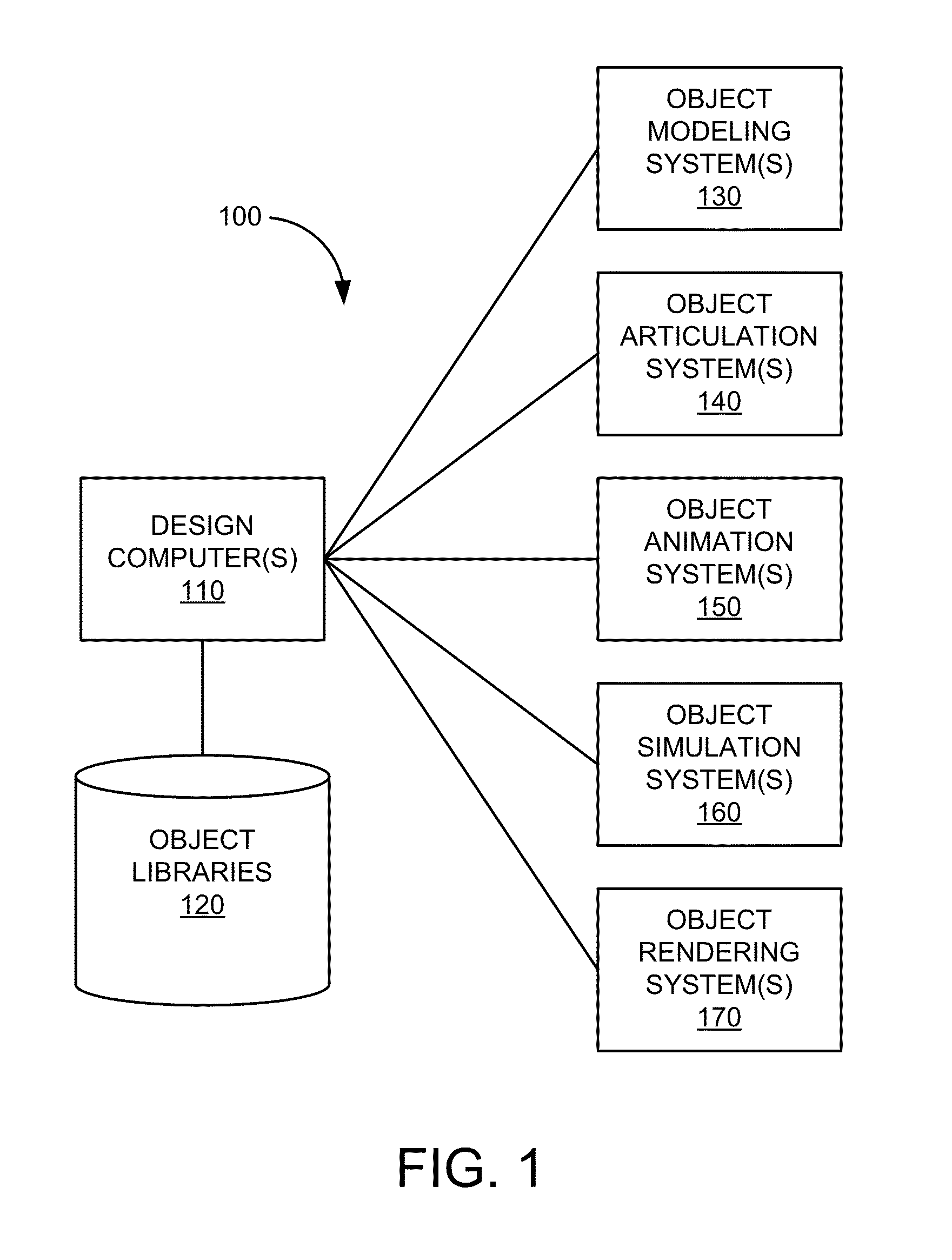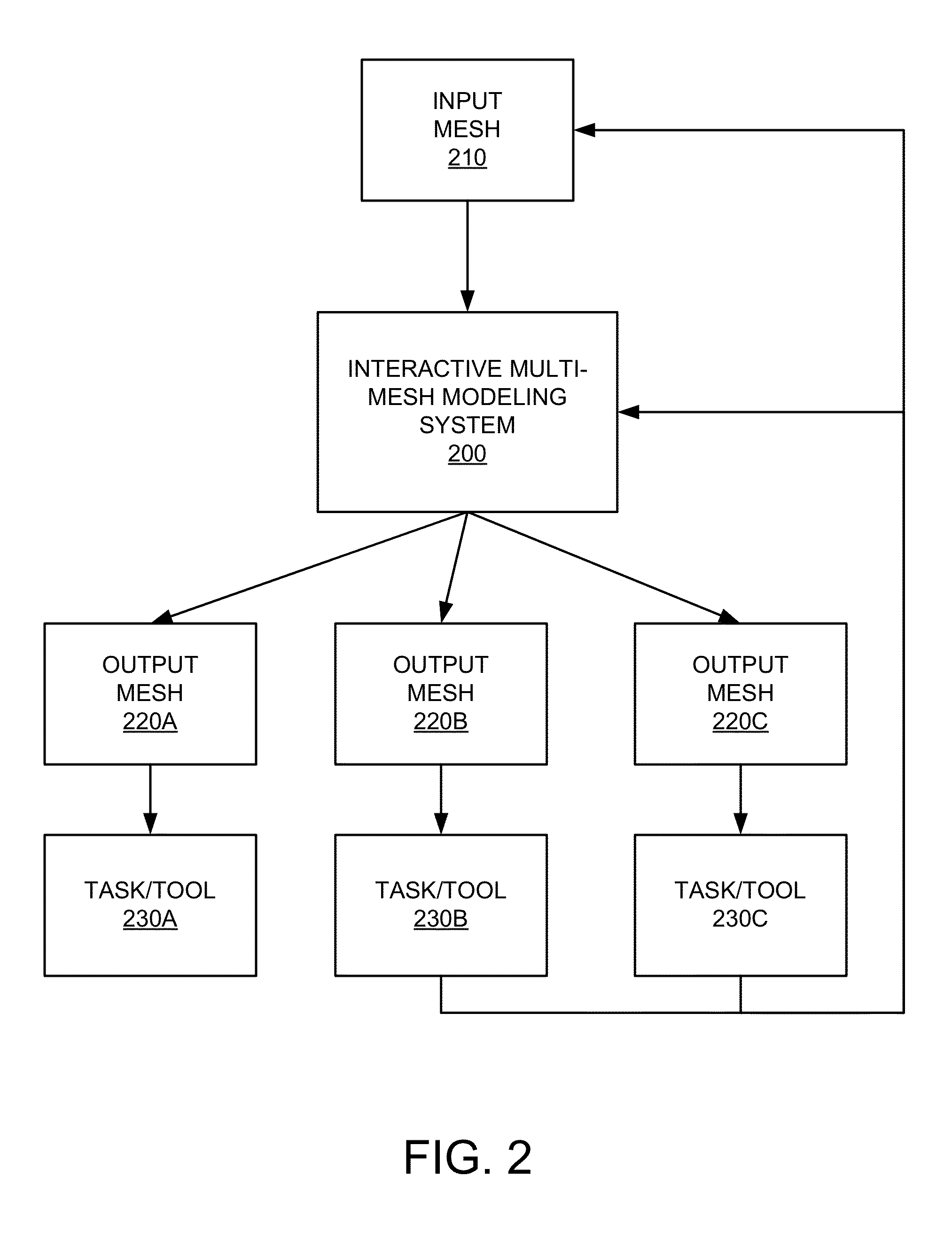Interactive multi-mesh modeling system
a multi-mesh modeling and interactive technology, applied in the field of computer generated imagery and computer-aided animation, can solve the problems of limiting the ability of users to create enough variants of the model, affecting the ability of users to design for several hours to several days, and time and effort of users
- Summary
- Abstract
- Description
- Claims
- Application Information
AI Technical Summary
Benefits of technology
Problems solved by technology
Method used
Image
Examples
Embodiment Construction
[0036]This disclosure relates to computer-generated imagery (CGI) and computer-aided animation. More specifically, this disclosure relates to an interactive multi-mesh modeling system and associated techniques for use in CGI and computer-aided animation.
[0037]In various embodiments, an interactive multi-mesh modeling system may allow users to employ a variety of modeling techniques (e.g., solid modeling or shell / boundary modeling) to interactively create one or more computer-generated representations of objects (e.g., animated characters, static props, and objects whose motions are determined by computer simulations) for a variety of different tasks or tools associated with phases of modeling, layout and animation, and rendering. Some of these different tasks or tools can have requirements for the computer-generated representations of objects on which they operate. These requirements may differ from how some computer-generated representations were originally created (e.g., 3D solid ...
PUM
 Login to View More
Login to View More Abstract
Description
Claims
Application Information
 Login to View More
Login to View More - R&D
- Intellectual Property
- Life Sciences
- Materials
- Tech Scout
- Unparalleled Data Quality
- Higher Quality Content
- 60% Fewer Hallucinations
Browse by: Latest US Patents, China's latest patents, Technical Efficacy Thesaurus, Application Domain, Technology Topic, Popular Technical Reports.
© 2025 PatSnap. All rights reserved.Legal|Privacy policy|Modern Slavery Act Transparency Statement|Sitemap|About US| Contact US: help@patsnap.com



